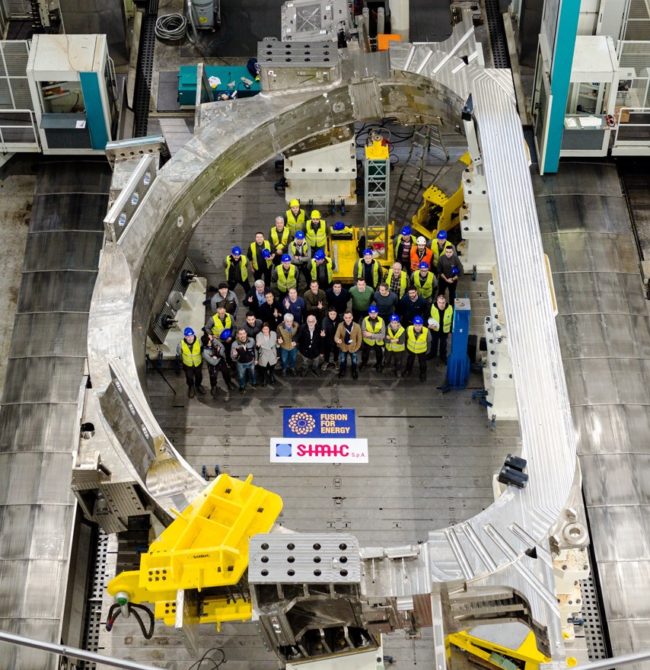
A Remarkable Achievement in Fusion Energy: ITER’s Super Magnet Finalized
In a landmark accomplishment for worldwide science and sustainable energy, the ITER (International Thermonuclear Experimental Reactor) initiative in southern France has successfully assembled one of the most formidable electromagnets ever constructed. With the final module of the Central Solenoid delivered in April 2025, ITER has completed a vital element of its groundbreaking fusion reactor—an engineering wonder aimed at mimicking the power of the stars right here on Earth.
At the core of this accomplishment is a magnet so powerful that it could elevate an aircraft carrier. Weighing nearly 3,000 tons and generating a magnetic field almost 280,000 times stronger than that of Earth, the ITER magnet system is set to be instrumental in humanity’s quest for clean, abundant energy through nuclear fusion.
ITER: An International Effort Towards Sustainable Energy
ITER represents more than just a scientific venture; it is a remarkable instance of global collaboration. This project unites seven major participants—China, Europe, India, Japan, Korea, Russia, and the United States—in a collective mission to harness fusion energy as a feasible, carbon-neutral energy source for future generations.
“What distinguishes ITER is not only its intricate technical design but the framework of global collaboration that has upheld it through shifting political contexts,” observes Pietro Barabaschi, ITER’s Director-General. “The ITER Project is a symbol of optimism. With ITER, we demonstrate that a sustainable energy future and a peaceful way forward are within reach.”
Exceptional Engineering: The Central Solenoid and the Magnetic Framework
The Central Solenoid—built by General Atomics in the U.S.—is the towering focal point of the project’s tokamak, a donut-shaped vacuum chamber where nuclear fusion will take place. This superconducting electromagnet is positioned vertically in the reactor’s core and will generate tremendous electrical currents in the adjacent plasma, creating magnetic forces robust enough to stabilize and confine it—a necessity when temperatures inside the tokamak soar to 150 million degrees Celsius, more than ten times hotter than the core of the Sun.
To achieve this containment, ITER’s magnetic architecture incorporates various types of superconducting magnets:
– Central Solenoid (U.S.): The principal driver of the plasma current.
– Toroidal Field Coils (Japan and Europe): Enormous D-shaped magnets that encircle the tokamak to establish a powerful horizontal magnetic field.
– Poloidal Field Coils (China, Europe, Russia): Ring-shaped magnets that regulate the plasma column’s shape and vertical stability.
– Cryostat (India): A 30-meter-tall vacuum-insulated container that maintains the entire magnetic system at an extremely cold -269°C to promote superconductivity.
– Thermal Shields (Korea): Precision barriers that isolate extreme hot and cold zones within the reactor.
Collectively, these technologies create a magnetic “invisible cage” that traps the vibrant, charged plasma inside the reactor, allowing hydrogen atoms—specifically isotopes deuterium and tritium—to fuse and release substantial amounts of energy.
Magnets with Galactic Strength
To achieve superconductivity and maintain its enormous magnetic fields, ITER’s magnets are cooled with liquid helium to nearly absolute zero (-269°C). Over 100,000 kilometers of superconducting wire have been manufactured across nine factories in six countries to fabricate the coils and modules. Once activated, these magnets will harbor up to 51 gigajoules of energy—approximately equivalent to the kinetic energy of a Nimitz-class aircraft carrier sailing at 30 knots.
All components for this magnetic framework have now been delivered on-site and are in the process of careful integration and testing. The project also celebrated another milestone in April 2025, when a significant portion of the vacuum chamber was installed ahead of schedule.
A Tenfold Energy Conversion
In contrast to contemporary nuclear fission energy utilized in conventional reactors, fusion combines atoms instead of dividing them, generating no long-lived radioactive waste and presenting minimal meltdown risk. The ITER reactor aims to showcase a tenfold energy increase: 500 megawatts of fusion power for a mere 50 megawatts of input heating power. No commercial fusion power facility has ever realized this “Q ≥ 10” ratio before, positioning ITER’s success as a potential turning point in the realm of clean energy.
The Science of Celestial Fire
Fusion is the mechanism that fuels our sun and other stars. By merging two light hydrogen isotopes into helium under extreme temperature and pressure, the reaction releases enormous quantities of energy—far more efficient on a per-mass basis compared to fossil fuels or nuclear fission.
The fuel for fusion is exceptionally plentiful: hydrogen from seawater and lithium from the Earth’s crust. Theoretically, a bathtub’s worth of seawater could yield as much energy as 40 tons of coal, with zero carbon emissions or air pollutants.
Private Sector Progress and Global Consequences
With private investment in fusion ventures rapidly increasing, ITER advanced in 2024 by establishing a knowledge-sharing platform.